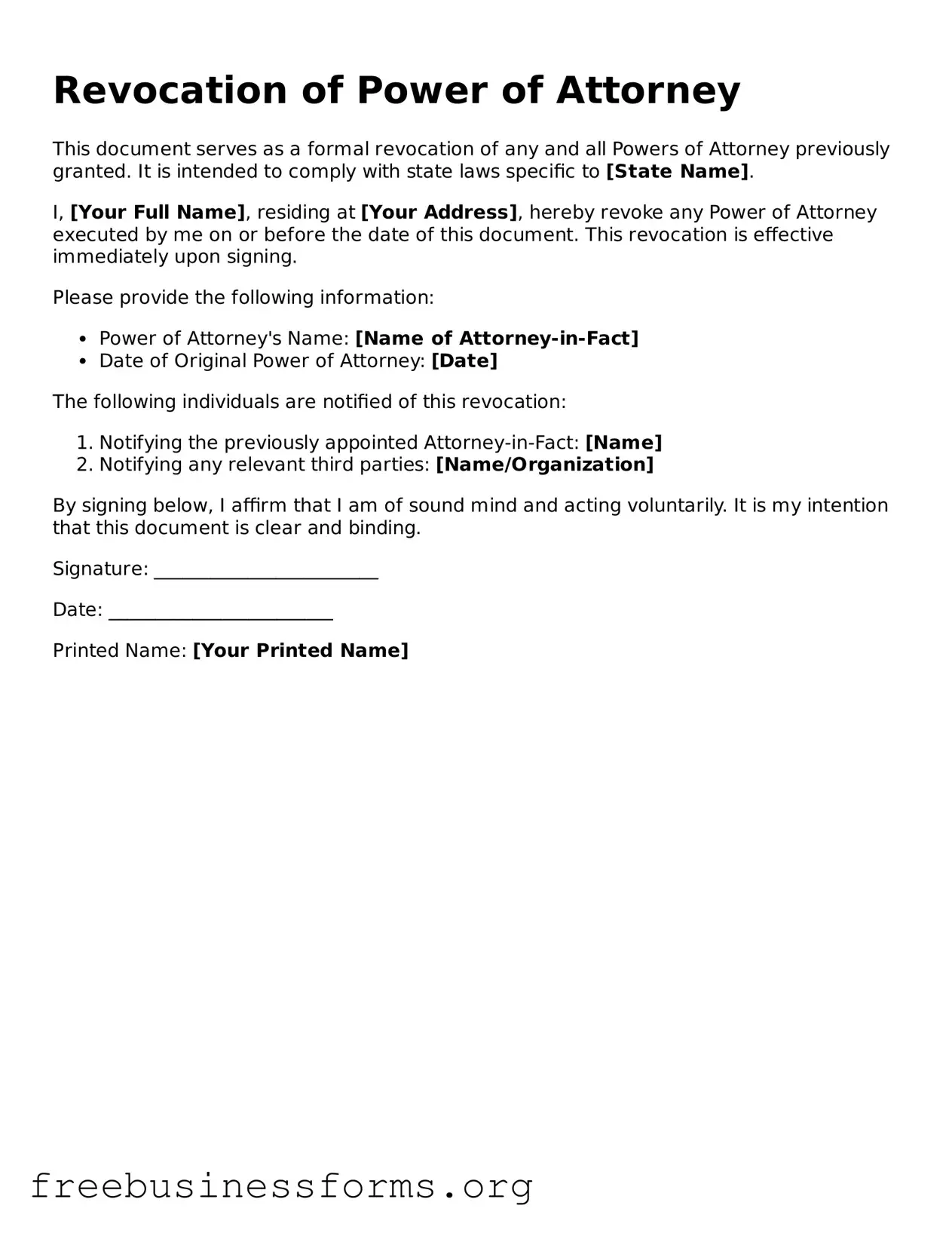Official Revocation of Power of Attorney Form
The Revocation of Power of Attorney form is a legal document that allows an individual to cancel or revoke a previously granted power of attorney. This form is essential for ensuring that your authority is no longer in effect, protecting your interests and decisions. Understanding how to properly complete and file this form can provide peace of mind and clarity in your legal affairs.
Open Form Here
